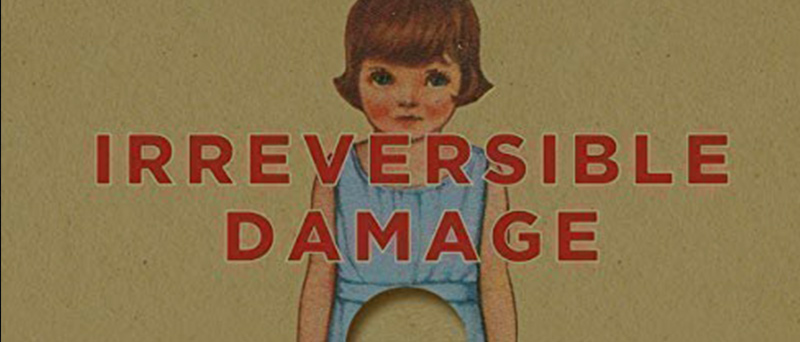
By Preston Sprinkle, President of the Center for Faith, Sexuality, and Gender.
Abigail Shrier’s book Irreversible Damage has created quite a stir. When it was first released in June 2020, Amazon refused to allow the publisher to run sponsored advertisements of the book. After Joe Rogan interviewed Shrier on his podcast, some Spotify employees demanded that the episode be taken down. More recently, Target took the book off its shelves in response to a complaint from a person on Twitter, but later put it back due to other complaints from free speech advocates. Several others have declared the book to be transphobic and harmful to the trans* community (just skim some of the reviews on Amazon)—a particularly hot take among those who have not read the book.
I did read Abigail’s book right after it was released (including the endnotes) and took copious notes. I fact-checked many of her claims and chased down some of the articles she cited to make sure she was fairly representing her sources. All of this was fairly easy, since I have been knee-deep in the same stream of research for my own book Embodied: Transgender Identities, the Church, and What the Bible Has to Say.
So how should we think about Abigail’s book? Should it be banned and burned, or read and evaluated? I’m going to argue for the latter.
Abigail Shrier is a journalist with degrees from Oxford and Yale Law. She’s an accessible writer and a very thorough researcher. Irreversible Damage addresses the so-called phenomenon of Rapid Onset Gender Dysphoria (ROGD)—one aspect of the larger trans* conversation—which I’ve written about elsewhere. In a word, ROGD has to do with the sudden rise in young females identifying as trans* and pursuing social, hormonal, or sometimes surgical transition. One of the main theories behind ROGD (as opposed to those who experience Early Onset Gender Dysphoria; dysphoria from early childhood) is that some level of social contagion is influencing these teen girls and nudging them to question their sex and identify as trans*. Hence the subtitle of the book: The Transgender Craze Seducing Our Daughters and the cover design featuring a little girl with a giant hole through her abdomen, apparently symbolizing a missing uterus.
Order Now!
Christian Sexuality: A 12-part, video-based, comprehensive discipleship experience for youth, mentors, and parents
Let me jump in right away and say: I don’t love the cover or the subtitle. First of all, the girl is too young. Uteruses are not being ripped out of 7-year-olds (though double mastectomies are being performed on girls as young as 13). Second, the cover looks like it’s trying to be more provocative than informative. Publishers, of course, are wanting to make money, and provocation sells more than bland information. But with such a delicate topic, I’m not sure that high sales should be our goal. Third, words like “transgender craze” are not only too sweeping, but unnecessarily offensive—as if every transgender person is some kind of crazy activist seeking to rip uteruses out of little girls. The actual content of the book is different, however. It’s reasoned, sensitive, compassionate, and concerned. The book isn’t even about transgender adults or the transgender conversation as a whole; it’s about one subtype of transgender experiences.
I think the subtitle and cover are unhelpful. But, as an author who has had to go around and around with publishers about my own book titles and covers, I know that there’s always a good deal of give and take, push and pull—moments where you give in and say, “fine, let’s go with your suggestion” only to regret it later. I’m not saying Abigail had no say in the cover or subtitle. She obviously did. Maybe she loved it. But I am saying: let’s not judge a book by its cover.
The book starts by pointing out the stunning rise in teenage girls coming out as trans*. Most Western countries—which is interesting—have seen a 1,000 – 5,000% increase in (mostly white) teenage females seeking treatment from gender clinics and psychologists, many of whom advise the teen to socially and medically transition (whether through hormones or surgery or both). In the past, it was mostly a very small percentage of males who were affected by Early Onset Gender Dysphoria, which typically manifested very young. “In the last decade that has changed, and dramatically” Shrier accurately notes.
The Western world has seen a sudden surge of adolescents claiming to have gender dysphoria and self-identifying as “transgender.” For the first time in medical history, natal girls are not only present among those so identifying—they constitute the majority (pg. xxi).
Everything about this statement is not only correct, but has been well documented in the scientific literature. (I would quibble about the phrase “claiming to have gender dysphoria,” Since this could make it sound like the gender dysphoria isn’t actually real for this entire population of girls.) It’s this sudden spike in cases—and all the controversy that surrounds it—that launches Shrier into a thorough investigation. “To tell the story of these adolescent girls, I conducted nearly two hundred interviews and spoke to over four dozen families of adolescents…I do not pretend to capture these adolescents’ whole stories, much less the fullness of the transgender experience.” (pg. xxiii). I would add that Shrier also took a deep and thorough dive into popular and academic literature surrounding the topic and I think she understands and fairly represents the various perspectives on this issue.
The rest of the book unfolds in a very logical, easy to follow manner. She has a helpful opening chapter about the social (and physiological) challenges that teenage girls face (ch. 1), and then a thorough overview of ROGD in particular (ch. 2). She then unravels some of the themes surrounding the phenomena of ROGD, including: the “influencers” (social media voices) that affirm trans* identities and transitioning in teens (ch. 3), a particularly frightening chapter on public school curriculum (ch. 4), interviews with parents of ROGD kids (ch. 5), a survey of some of the medical care-takers who advocate for gender affirmative care (i.e. one’s internal sense of self is more determinative of whether you’re male or female than biological sex; ch. 6), medical professionals who push back on the gender affirmative only model (ch. 7) and how they’ve been cancelled, fired, threatened, or all of the above (ch. 8), a graphic summary about the reality of transitioning (ch. 9), stories of transition regret (ch. 10), and some concluding thoughts on our cultural moment (ch. 11). Shrier is a very accessible writer with a good blend of seriousness and sass, wit and wisdom—which may not be everyone’s literary cup of tea (more on this below).
One of the reoccurring themes throughout the book are related to gender stereotypes, social contagion, and the erasure of the tomboy.
[T]here is no such thing as “tomboy” anymore, as any teenage girl will tell you. In its place is an endless litany of sexual and gender identities—public, rigid, and confining. As sixteen-year-old Riley, a young woman who began identifying as a boy at thirteen, put it to me: “I think being a masculine girl today is hard because they don’t exist. They transition.” Transition, that is—to boys (pg. 13).
Saying “there’s no such thing as ‘tomboy’ anymore” is a bit overstated, but I have found Shrier’s observation to be generally true. In many social contexts today, if you don’t resonate with rigid femininity or masculinity, then some will say you’re probably trans*. Such environments, says Shrier, foster a kind of social contagion where teens with no history of gender dysphoria suddenly come out as trans*, usually after a friend (or two, or three, or four) comes out as trans* and after heavy doses of viewing trans*-affirming personalities online. This is, perhaps, the most controversial part of the book and in the trans* discussion as a whole: whether the massive spike in teenager girls identifying as trans* is the result, in part, of social contagion.
Historically, teenage girls especially have been susceptible to social contagions such as “[a]norexia nervosa, repressed memory, bulimia, and the cutting contagion in the twentieth century” (pg. xix). This has all been well-documented and isn’t seriously disputed among psychologists. What is disputed is whether the sudden rise in biological females identifying as trans* is also a result of social contagion. Shrier addresses this debate head on in chapter 2 by looking at the recent (and controversial) research of Dr. Lisa Littman of Brown University. Littman herself is your classic liberal Ivy League professor. She spent several years working for Planned Parenthood, has written for HuffPost, has been very critical of the GOP, is pro-gay marriage, pro-choice, and supportive of trans*-identifying adults transitioning. She’s also the one who coined the term “Rapid Onset Gender Dysphoria” based on her peer-reviewed research into the rapid rise of teens identifying as trans*. Littman herself does find quite a bit of evidence for social contagion playing some role in in the rise of female teens identifying as trans*. (Again, neither Littman nor Shrier say that trans* identities are all the result of social contagion, nor even that all teens who identify as trans* don’t really have gender dysphoria.)
I felt that Shrier did a thorough job summing up both Littman’s research and addressing some of Littman’s critics. Having read through Littman’s research (several times), psychologists who support it, and critics who denounce it—I have found Littman’s research and conclusions to be factually supported and convincing overall. I’ve also found her critics to make poor, often reactionary arguments (which usually amount to slurs like “transphobic”), or they simply claim that her research will harm people.
Buy Now!
Embodied: The Latest from Preston Sprinkle
This has become the main critique of Irreversible Damage, especially among those who have not read the book—that it will harm people. What are we to make of this? Will Shrier’s book harm trans* people?
Those who say “yes” believe that theories like Littman’s and Shrier’s will lead parents to believe that their kids aren’t really trans*; that their new identity is simply a fad. This will inevitably foster a non-affirming, unloving, and toxic home environment which will ultimately cause the trans*-identified child to leave the house, get kicked out, or attempt suicide. If a teenage says they’re trans*, then they’re trans*. Period. And the only way they will survive in this world is to be affirmed (read: agreeing that their internal sense of self is who they really are) and given the medical attention they need (puberty blockers, cross-sex hormones, and/or surgery).
All of this is heart wrenching. The suicide rates among trans* people are very high (though often misinterpreted), and I’ve known many LGBT kids who were raised in incredibly toxic home environments (more on this below). But the harm argument can cut both ways.
We know for a fact that most kids with gender dysphoria “desist” (or grow out of it) after puberty and it’s not uncommon for teenagers to change identities—especially the kinds of teenagers who make up the majority of ROGD teens. Teenage females are particularly prone to various social contagions (eating disorders, cutting, etc.), and the environments where there’s a rapid increases in teenage females identifying as trans* (often in clusters) does have all the ingredients of some level of social contagion. Plus, as Littman and Shrier have pointed out, most of the teenagers who experience rapid onset gender dysphoria have other co-occurring mental health issues that often aren’t being dealt with in a healthy manner. Many ROGD teens who do transition oftentimes still deal with the same mental health issues they had before: depression, anxiety, suicidality, mood disorders, and many others. Oftentimes they become worse. Add to this the growing number of detransitioners—female young adults who themselves validate the research of Littman and Schrier, and who claim to be living and breathing evidence of the irreversible damage Shrier writes about. One could say that not paying attention to Shrier’s book will lead to harm.
Do I have any critiques of the book? Yes I do, but I think they are minor.
- Aside from the cover and subtitle, my impression is that Shrier could have given a few more reminders that ROGD is one kind of trans* experience. What we say about teenage females with ROGD doesn’t apply to every trans* experience. (My critique is admittedly subjective, relying simply on my impression after having read the book. Someone else might feel that she gave plenty of reminders.)
- The book does tend to paint a one-sided picture of parents with ROGD teens. All the parents seemed to be amazing while the kids are being brainwashed by society. This might be true of some, perhaps many, situations. But, anecdotally, I’ve just heard too many testimonies that are the exact opposite: parents who are not very loving; kids who were verbally or sometimes physically abused by their parents or with their parents’ knowledge; trans*-identified kids who couldn’t match up to rigid and oppressive gender stereotypes promoted by their parents. It would be have been good to hear more stories like this to balance out the picture. I can imagine a trans* teen raised in a truly toxic home environment having a hard time with Shrier’s book.
- While Shrier’s research was, for the most part, very solid, I think she misrepresented the famous Dutch study led by Cecilia Dhejne (pg. 118). I’ll save you the details if you’re unfamiliar, but this study does not show “a rise in suicidality” among trans* people who transition “after sex reassignment surgery” as Shrier claimed. The study simply shows that trans* people have a much higher suicide rate than the general population, even after they transition. But for all we know, these trans* people could have had an even higher rate of suicide than before, had they not transitioned.
- Shrier used the term “transgender men” on at least one occasion (pg. 129) to refer to biological males who identify as females. But the most accepted term here is “transgender women.” I’m fine with Schrier protesting this common usage if she wants. But by not drawing attention to it makes me think she just made a mistake.
- I was surprised not to find any reference to Rogers Brubaker’s important book Trans: Gender and Race in an Age of Unsettled Identities when she was discussing the relationship between transgender identities and transracial identities (pg. 100)—a topic that Brubaker tackled head on.
- Overall, Shrier writes like a journalist—engaging, witty, at times humorous, at other times pointing out the absurdity of some current ideas. I personally enjoy this kind of spicy writing. I hate boring sentences strung together and stuffed into a book. But some who identify as trans* or experience gender dysphoria might not enjoy this kind of journalistic prose when it’s their life that’s under the microscope.
Overall, Irreversible Damage is a much-needed contribution to an important subset of the greater trans* conversation. It’s not homophobic, and don’t let people tell you it is. (And, of course, only listen to book critiques from people who have actually read the book.) I don’t believe the book will harm trans* people. Of course, people could misuse the book and those people could harm trans* people—millions have been harmed by people misusing the Bible, but this doesn’t mean the Bible is intrinsically harmful. But I would suggest that not paying attention to Shrier’s work could itself lead to an even greater harm.


